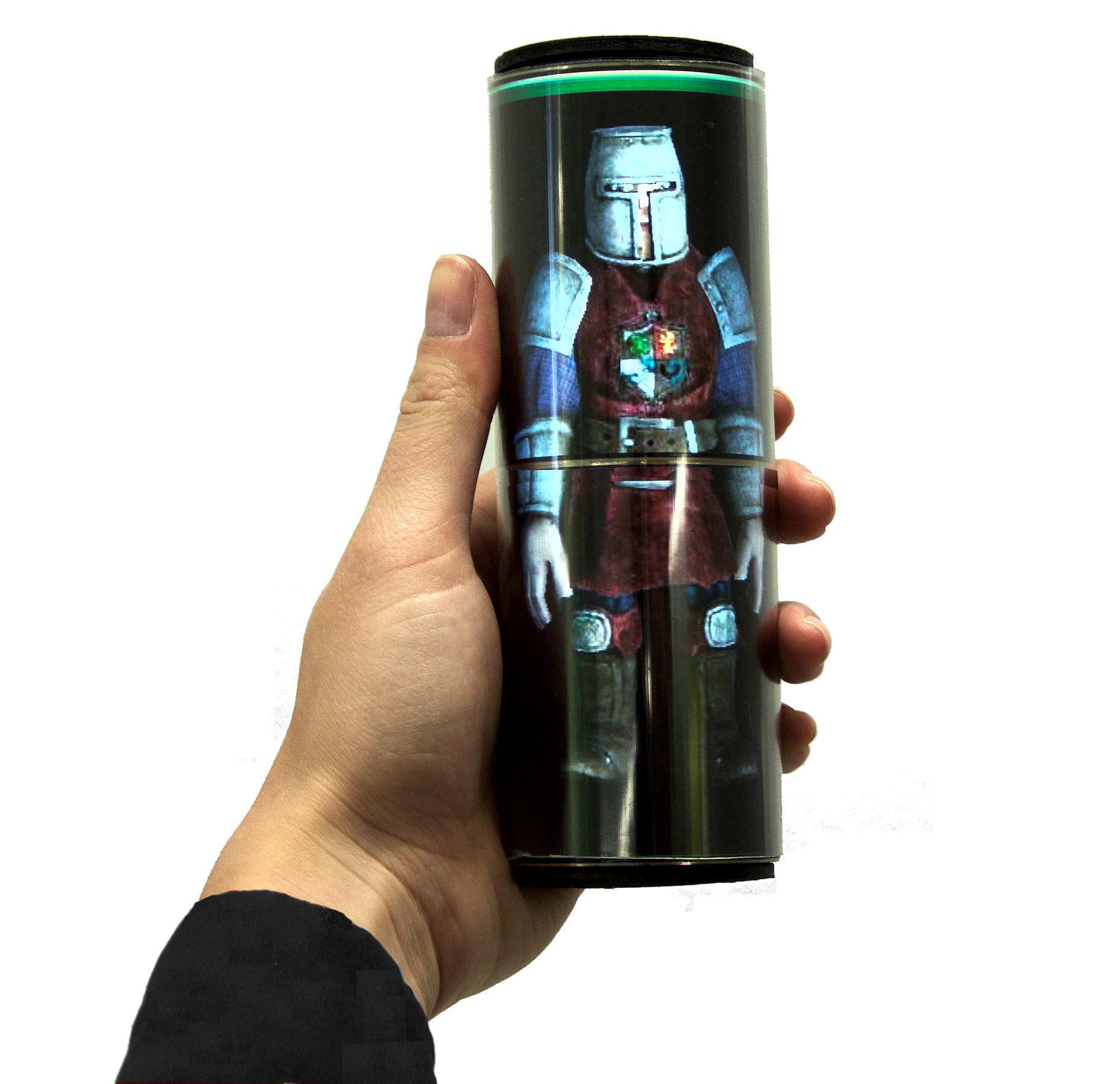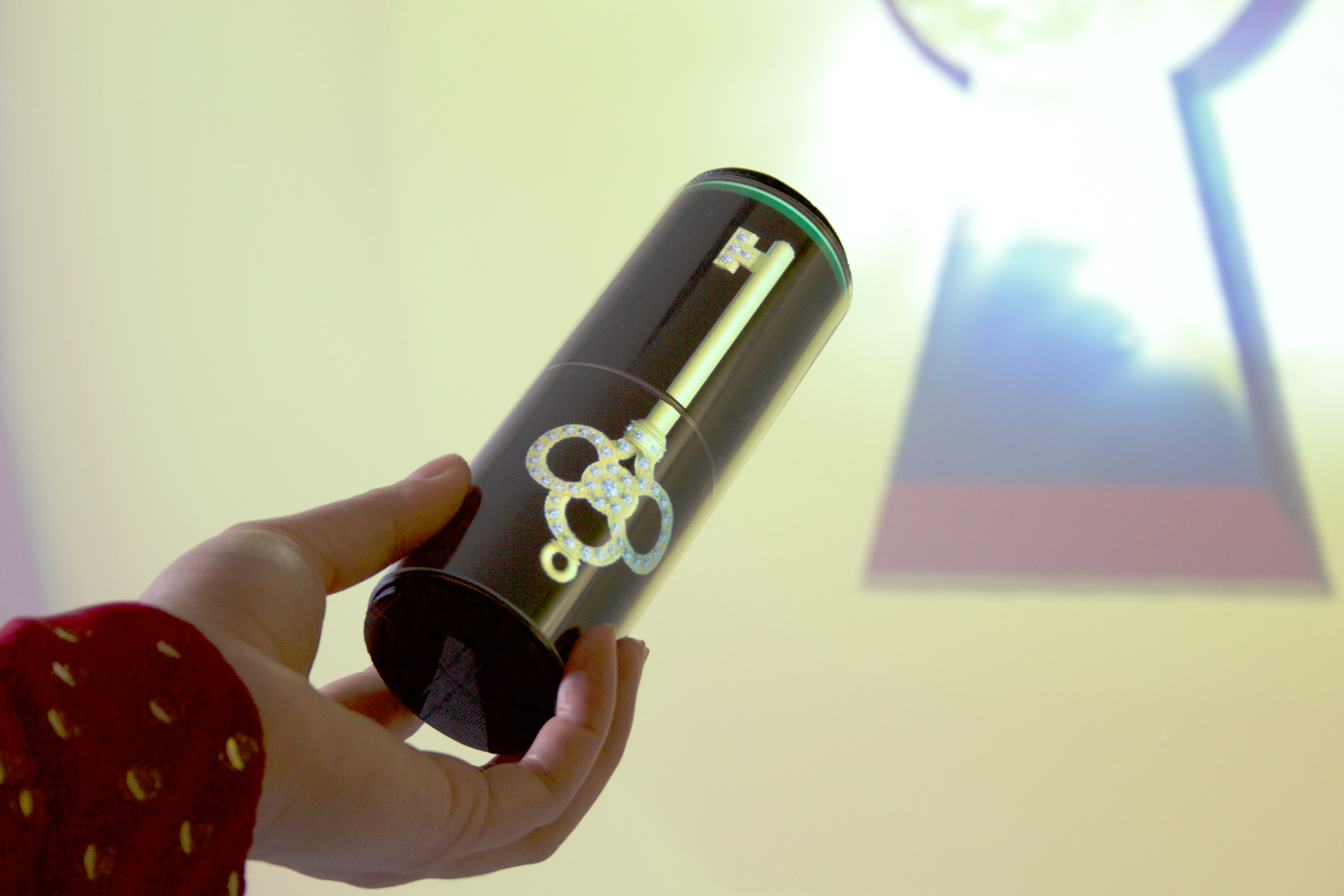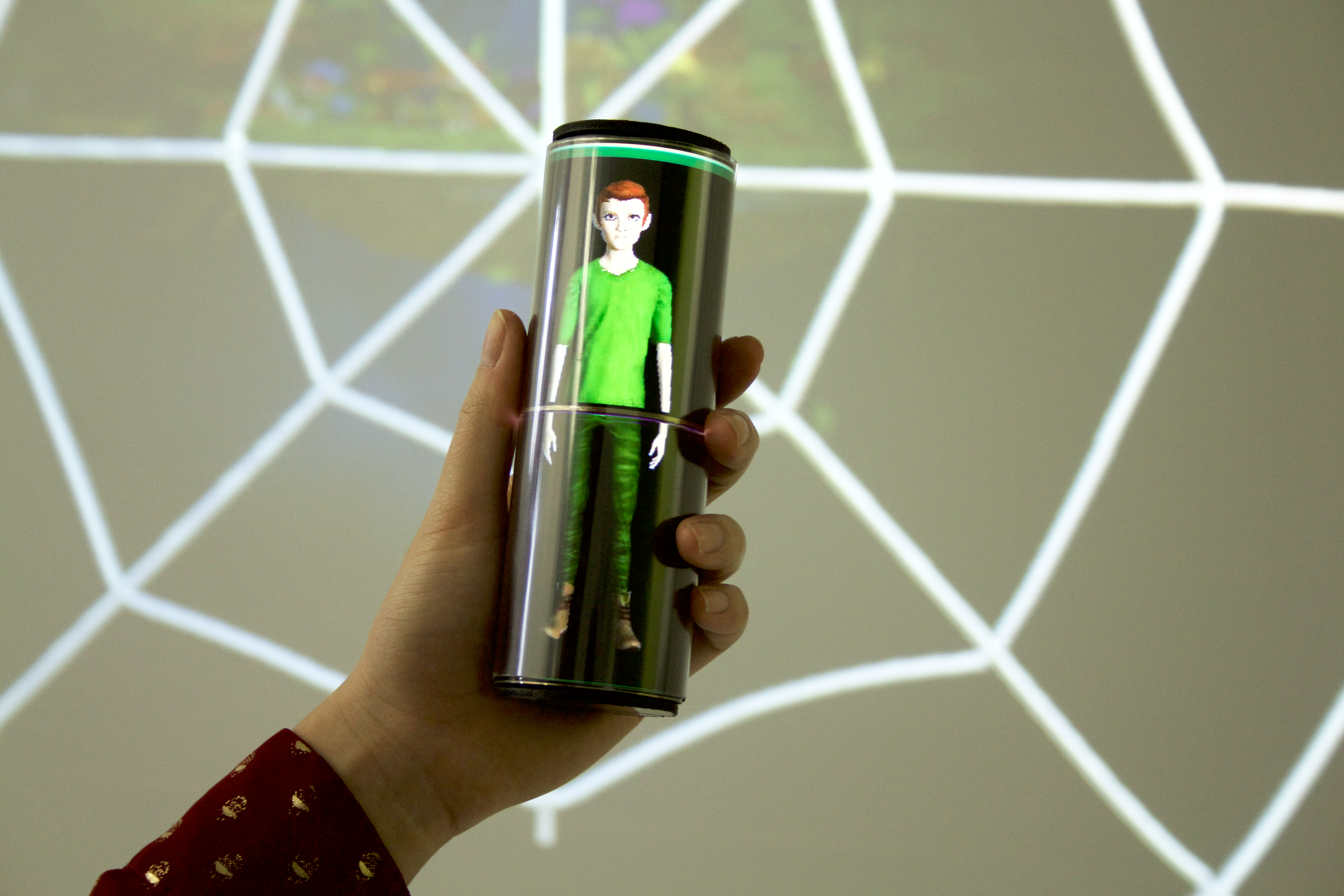Queen’s University’s Human Media Lab to unveil world’s first handheld with a fully cylindrical display at CHI 2016 conference in San Jose, CA.
KINGSTON - Researchers at Queen’s University’s Human Media Lab have developed the world’s first handheld device with a fully cylindrical user interface. The device, dubbed MagicWand, has a wide range of possible applications, including use as a game controller.
Similar to the Nintendo Wii remote, but with a 340 degree cylindrical display, users are able to use physical gestures to interact with virtual 3D objects displayed on the wand. The device uses visual perspective correction to create the illusion of motion parallax; by rotating the wand users can look around the 3D object.
“This, for example, means you can rotate MagicWand and see a gaming character inside it from all sides, as if it were 3D” says Roel Vertegaal (School of Computing), director of the Human Media Lab at Queen’s University. “Smartphones are flat and not ergonomically suitable for use as a controller or pointing device. MagicWand is the first handheld with a 340 degree high resolution display to have the regular physical affordances of a pointer stick."
MagicWand uses two high definition 720p LG Display Flexible OLED screens powered by Android 4.4 “KitKat” boards. Sensors inside the device are used to capture and transmit movements, as well as to adjust how objects are displayed. The screens are synchronized to act as a single, continuous 1440x1280 display. The MagicWand runs the Unity 3D game engine, allowing it to interact with gaming content on consoles over WiFi.
"As the Wii U has shown, the form factor of a controller is really critical when interacting with gaming content." says Dr. Vertegaal. "MagicWand really allows users, for the first time, to play around with gestures while being able to hold gaming visuals literally in their hand. It is the world's first true DisplayObject, going well beyond what has been demonstrated in any smartphone or controller."
Dr. Vertegaal thinks DisplayObjects with cylindrical form factors will be in the hands of consumers within five years. Queen’s researchers will unveil the MagicWand prototype at the ACM CHI 2016 Conference on Human Factors in Computing Systems in San Jose, California on May 9th. The annual forum is the world’s top conference on Human-Computer Interaction.
This research was supported by Immersion Canada, Inc. and the Natural Sciences and Engineering Research Council of Canada (NSERC).
Media Footage
High resolution photographs of MagicWand are available rights-free by clicking the thumbnails below. Please include a photo credit to Human Media Lab.
References
Priyadarshana, L.L., Porter, V., Carrascal, J-P., Visser, A., and Vertegaal. R. MagicWand: Exploring Physical Affordances with a Handheld Cylindrical Display Object. In Extended Abstracts of ACM CHI’16 Conference on Human Factors in Computing Systems. ACM Press, 2016.
Akaoka, E., Ginn, T. and R. Vertegaal. DisplayObjects: Prototyping Functional Physical Interfaces on 3D Styrofoam, Paper or Cardboard Models. In Proceedings of TEI’10 Conference on Tangible, Embedded and Embodied Interaction. ACM Press, 2010, pp. 49-56.
About the Human Media Lab
The Human Media Lab (HML) at Queen’s University is one of Canada's premier Human-Computer Interaction (HCI) laboratories. Inventions include ubiquitous eye tracking sensors, eye tracking TVs and cellphones, PaperPhone, the world’s first flexible phone, PaperTab, the world’s first flexible iPad and TeleHuman, the world’s first pseudo-holographic teleconferencing system. HML is directed by Dr. Roel Vertegaal, Professor of HCI at Queen's University's School of Computing, as well as a number of graduate and undergraduate students with computing, design, psychology and engineering backgrounds.
Contact
Chris Armes
Communications Officer, Media Relations
613-533-6000 ext. 77513
chris.armes@queensu.ca



